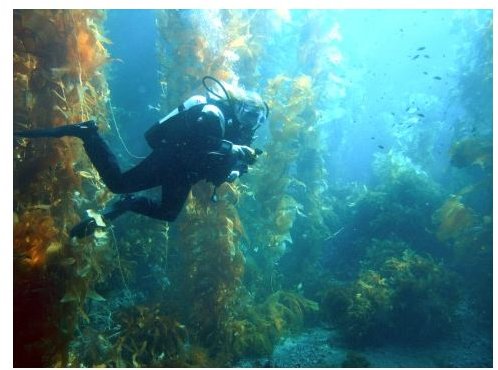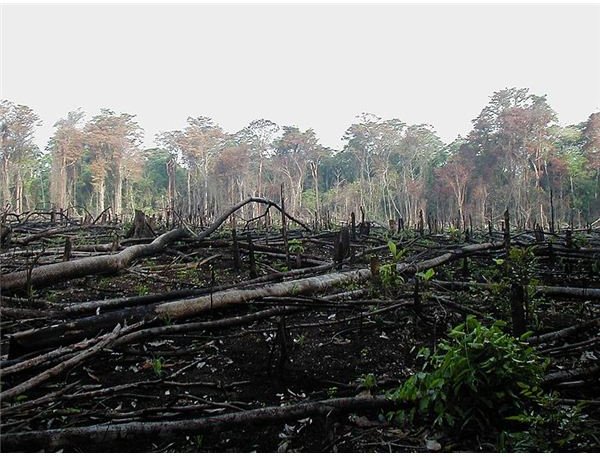Causes of Change in an Ecosystem: Disturbances and Invasion, When a Dominant Species is Removed, and More
Ecosystem Defined
An ecosystem includes all of the living things in a particular place and time, all of the interactions they have with each other, and the physical or chemical environment in which they exist. Ecosystems are places where many changes occur naturally all the time - for example changes in sunlight over the course of a day, changes in the height of tides over a month, and changes in seasons over a year. Wind, rainfall, and other factors may have predictable patterns as well. Ecological succession - where different groups of species take over from each other toward a “climax” community - is a series of gradual one-way changes.
Ecological Niche Defined
Each ecosystem has a number of finite resources. There are physical ones like living space, access to sunlight for photosynthesis, and access to food, water, or nutrients. Others come from living things, such as trees or a coral reef creating new living space, or prey becoming food for predators. Because resources are finite, there is ecological competition for them between species. Each species in an ecosystem has found ways to use these resources for themselves while excluding all other species from using the same ones in the exact same ways. Each subdivision of a resource in use by a different species is an ecological niche.
In a healthy ecosystem, all of the ecological niches are filled. No new species can establish themselves unless something causes an opening.
Ecological Disturbances
Historically, a disturbance in an ecosystem is defined as “a discrete event in time that disrupts ecosystems or communities, changes substrate and/or resource availability, and creates opportunities for new individuals or colonies to become established.”
Disturbances might be caused by abiotic events like fires, storms, floods, droughts, or changes in water currents. They might have a biological origin, such as trampling by large grazing herbivores, underground tunneling by moles or prairie dogs, bioturbation of marine sediments, deforestation, or off-road vehicles.
Disturbances come in two scales: disasters and catastrophes. Disasters are not so severe as to wipe out everything in the ecosystem, and they tend to happen often enough to exert some natural selection. Depending on the scale of the ecosystem, they can be as small as turning over a rock. Catastrophes have no possible adaptive responses (volcanic eruptions, asteroid impacts, strip mining, etc.) - the slate is wiped clean and any new ecosystems must start from scratch.
What is an Invasive Species?

A disturbed ecosystem often has open ecological niches. This allows new species to introduce themselves, displacing or eliminating the ones that were there before by outcompeting them. The invading species often has an impact on species in other parts of the ecosystem as well, with a cascading effect. Some examples of invasive species are kudzu - a fast-growing vine originally from Japan which now covers large portions of the southeastern United States and blocks sunlight from native trees, and zebra mussels - a bivalve mollusk originally from southeast Russia which now clogs many lakes and rivers in Europe and North America, particularly the Great Lakes.
What is a Keystone Species?
Another cause of change in an ecosystem is the removal of a single species that plays a key role in how the ecosystem functions. When a dominant species is removed, it can cause a drastic shift in the balance of ecological interactions within the ecosystem. Examples of keystone species are wolves in Yellowstone Park and sea otters in Pacific kelp forests.

Wolves eat elk. Elk eat small woody plants and young trees. Tree roots stabilize the soil and reduce erosion. When wolves were removed from Yellowstone by 1926, the elk became more numerous and ate all the trees, leaving only bare soil that eroded away. Wolves were reintroduced in 1995, and now the trees are making a comeback.
Similarly, sea otters eat sea urchins, which eat algae and seaweed, including kelp, in coastal ocean areas. Kelp forests provide food and shelter to a large number of fish and invertebrates. When sea otters were killed for their fur and for eating abalones that humans wanted, the kelp forests disappeared too, leaving nothing but urchins on barren rock. Later, when sea otters were reintroduced, the kelp forests returned.
Changing The Resources Or Their Limits
Altering the resources available in an ecosystem can also cause changes. Alterations might be the removal of a resource, addition of a new resource, or a change in the typical amounts available. This can eliminate or create ecological niches, or change the population size limits of species within the system.
Eutrophication is an example of what happens to ponds, lakes, estuaries and coastal oceanic areas when too many extra nutrients are added. Algae are able to grow a lot more than they would normally. When the algae die, their decomposition uses up all the oxygen in the water, which asphyxiates everything else.
References and Photo Credits
Begon, M., J.L. Harper, and C.R. Townsend. 1990. Ecology: Individuals, Populations and Communities. 2nd ed. Blackwell Scientific Publications, Inc.
White, P.S., and S.T.A. Pickett. 1985. “Natural disturbance and patch dynamics: an introduction.” in S.T.A. Pickett and P.S. White (eds.), The Ecology of Natural Disturbance and Patch Dynamics. Academic Press, New York, pp.3-13.
Photos by Jami Dwyer (burned forest, public domain), GerardM (zebra mussels, CC-A-SA-3.0), and Ed Bierman (kelp forest, CC-A-2.0).
